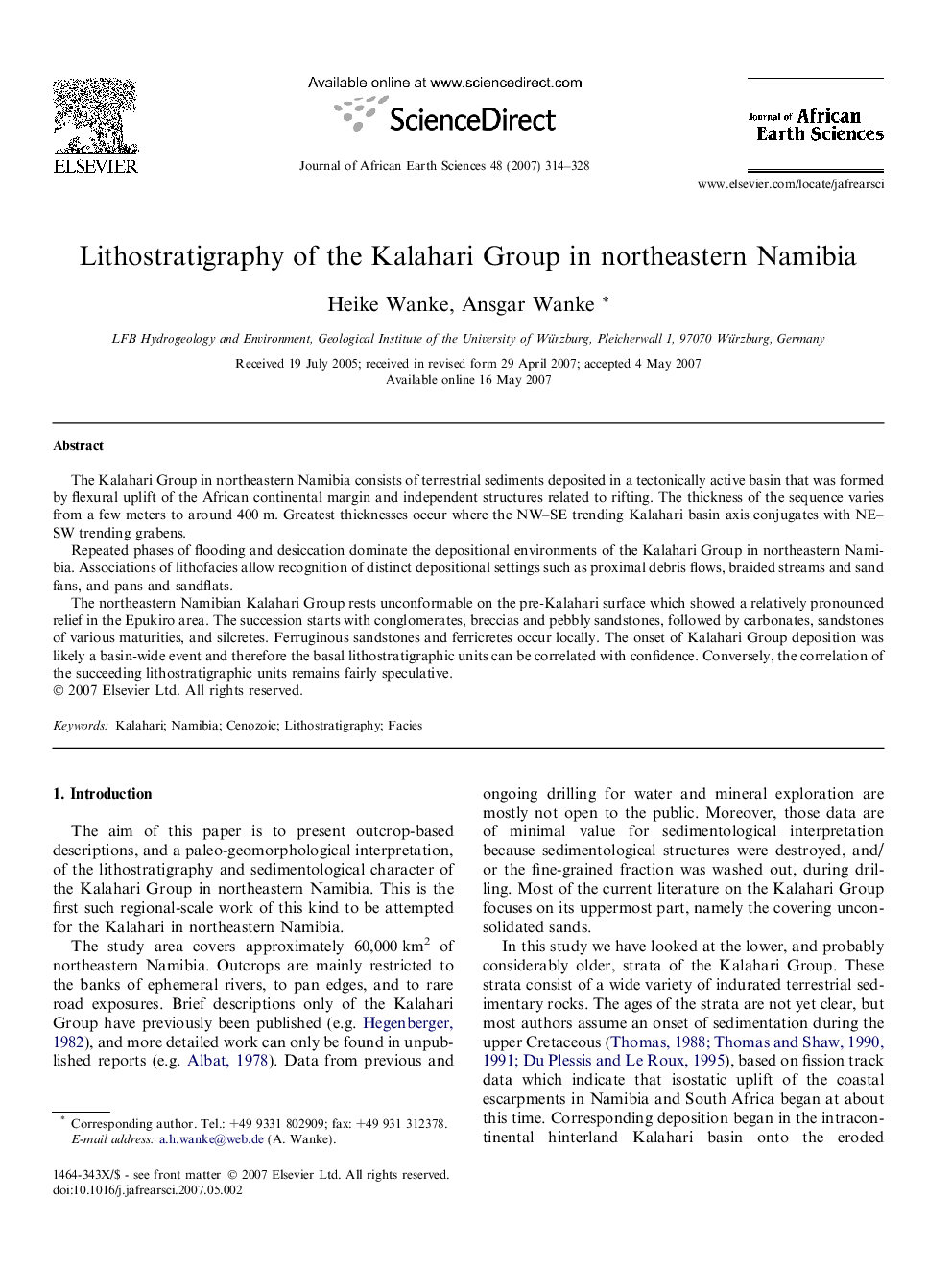| Article ID | Journal | Published Year | Pages | File Type |
|---|---|---|---|---|
| 4729717 | Journal of African Earth Sciences | 2007 | 15 Pages |
The Kalahari Group in northeastern Namibia consists of terrestrial sediments deposited in a tectonically active basin that was formed by flexural uplift of the African continental margin and independent structures related to rifting. The thickness of the sequence varies from a few meters to around 400 m. Greatest thicknesses occur where the NW–SE trending Kalahari basin axis conjugates with NE–SW trending grabens.Repeated phases of flooding and desiccation dominate the depositional environments of the Kalahari Group in northeastern Namibia. Associations of lithofacies allow recognition of distinct depositional settings such as proximal debris flows, braided streams and sand fans, and pans and sandflats.The northeastern Namibian Kalahari Group rests unconformable on the pre-Kalahari surface which showed a relatively pronounced relief in the Epukiro area. The succession starts with conglomerates, breccias and pebbly sandstones, followed by carbonates, sandstones of various maturities, and silcretes. Ferruginous sandstones and ferricretes occur locally. The onset of Kalahari Group deposition was likely a basin-wide event and therefore the basal lithostratigraphic units can be correlated with confidence. Conversely, the correlation of the succeeding lithostratigraphic units remains fairly speculative.
